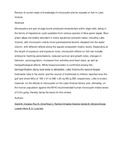Review of current state of knowledge of microcystin and its impacts on fish in Lake Victoria
Date
2020-07-03Author
Onyango, David M.
Orina, Paul S.
Ramkat, Rose C.
Kowenje, Chrispine
Githukia, Cecilia M.
Lusweti, Dorcas
Lung'ayia, Henry B. O.
Metadata
Show full item recordAbstract
Microcystins are part of algal toxins produced intracellularly within algal cells, being in the family of hepatotoxic cyclic peptides from various species of blue-green algae. Blue-green algae are widely abundant in many equatorial eutrophic lakes, including Lake Victoria, with microcystin mainly from cyanobacterial blooms released into the water column, with different effects along the aquatic ecosystem trophic levels. Depending on the length of exposure and exposure route, microcystin effects on fish can include embryonic hatching perturbations, reduced survival and growth rates, changes in behavior, osmoregulation, increased liver activities and heart rates, as well as histopathological effects. While bioaccumulation is confirmed among fish, biomagnification along food webs is debatable. Lake Victoria the second largest freshwater lake in the world, and the source of livelihoods to millions reported near the gulf and shore MCs of 190 ± 51 to 543 ± 26 ng MC/g DW, respectively. Little is known, however, on the effects of microcystin on the Lake Victoria fishery and, ultimately, on the human population against the WHO recommended human microcystin intake levels of 0.04 µg/kg, thereby being the basis for this review.
URI
https://doi.org/10.1111/lre.12328https://onlinelibrary.wiley.com/doi/10.1111/lre.12328
http://ir-library.mmust.ac.ke:8080/xmlui/handle/123456789/1928
Collections
- Gold Collection [1026]

